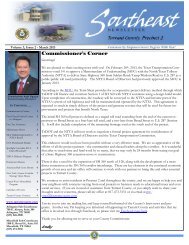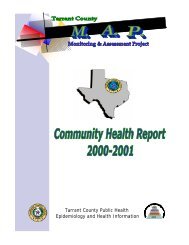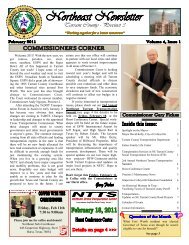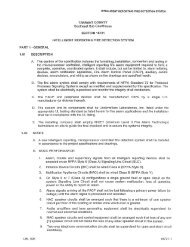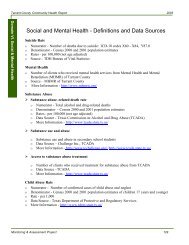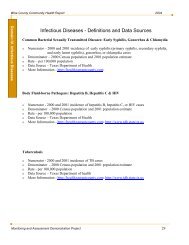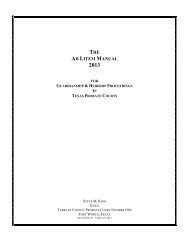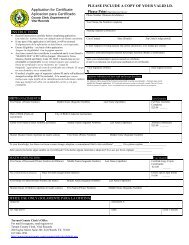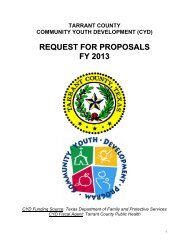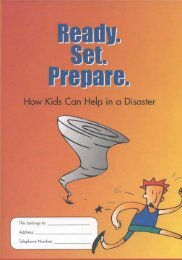MAPP Handbook - The National Association of County and City ...
MAPP Handbook - The National Association of County and City ...
MAPP Handbook - The National Association of County and City ...
You also want an ePaper? Increase the reach of your titles
YUMPU automatically turns print PDFs into web optimized ePapers that Google loves.
COMMUNITY HEALTH STATUS ASSESSMENT<br />
<strong>The</strong> Community Health Status Assessment (CHSA) answers the questions: “How<br />
healthy are our residents?” <strong>and</strong> “What does the health status <strong>of</strong> our community look like?”<br />
During this assessment, information regarding health status, quality <strong>of</strong> life, <strong>and</strong> risk<br />
factors in the community is gathered <strong>and</strong> analyzed.<br />
<strong>The</strong> CHSA is a crucial component <strong>of</strong> the <strong>MAPP</strong> process in that the data gathered<br />
serves as the foundation for analyzing <strong>and</strong> identifying community health issues <strong>and</strong><br />
determining where the community st<strong>and</strong>s in relation to peer communities, state data,<br />
<strong>and</strong> national data. Because assessment is a core function <strong>of</strong> public health agencies, it<br />
may be appropriate for the local health department to play a lead role.<br />
<strong>The</strong> CHSA provides a list <strong>of</strong> core indicators (data elements) for 11 broad-based<br />
categories (listed below). Communities are encouraged to select additional indicators.<br />
Categories <strong>of</strong> Data Collected in the CHSA:<br />
Who are we <strong>and</strong> what do we<br />
bring to the table?<br />
1. Demographic Characteristics<br />
2. Socioeconomic Characteristics<br />
3. Health Resource Availability<br />
What are the strengths <strong>and</strong> risks<br />
in our community that<br />
contribute to health?<br />
4. Quality <strong>of</strong> Life<br />
5. Behavioral Risk Factors<br />
6. Environmental Health Indicators<br />
What is our health status?<br />
7. Social <strong>and</strong> Mental Health<br />
8. Maternal <strong>and</strong> Child Health<br />
9. Death, Illness <strong>and</strong> Injury<br />
10. Infectious Disease<br />
11. Sentinel Events<br />
How to Conduct the Community Health<br />
Status Assessment<br />
Step 1 — Prepare for the Community Health Status Assessment<br />
Participants should begin by reviewing the CHSA steps <strong>and</strong> determining if additional<br />
participants should be recruited. Recruitment <strong>of</strong> new participants should focus on<br />
those who will help to ensure access to data, provide for epidemiological analyses <strong>of</strong><br />
data, <strong>and</strong> facilitate community ownership <strong>of</strong> the completed health status pr<strong>of</strong>ile. In<br />
addition, since it is critically important that data be monitored long-term, select a<br />
number <strong>of</strong> members who can participate in future years.<br />
56



